Molecular Beam Photoelectron Spectroscopy
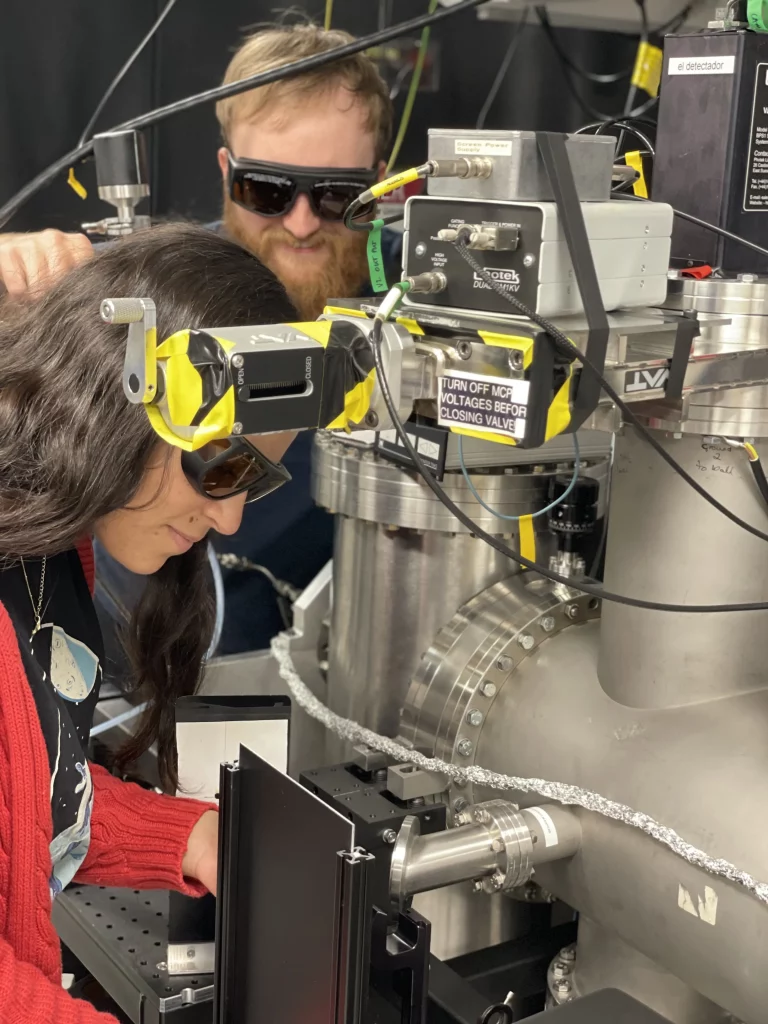
Our molecular beam photoelectron spectrometer is used for photoelectron spectroscopy studies of small neutral molecules in the gas-phases. It is equipped with an Amsterdam pulsed valve to transfer liquid or solid samples into the gas-phase and a velocity map imaging (VMI) spectrometer. UV femtosecond light pulses promote the molecules to electronically excited states and time-delayed UV femtosecond light pulses ionise the molecules. The kinetic energies and angular distributions of the photoelectrons provide information on the excited electronic states and allow us to obtain information about electronic relaxation processes. Current research using this instrument is focussed on biologically and atmospherically relevant molecules and their building blocks. We are also in the process of coupling this spectrometer with our new EUV light source.
Anion Photoelectron Spectroscopy
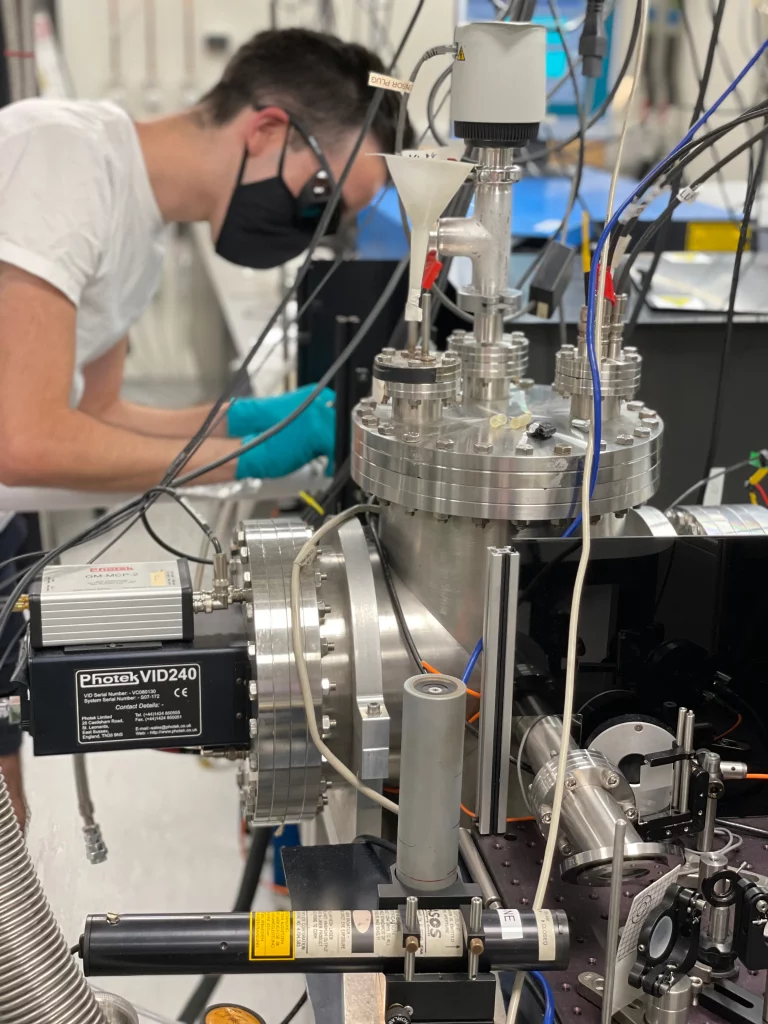
Our anion photoelectron spectrometer is used for photoelectron spectroscopy studies of small to medium sized molecular ions in the gas phase. It comprises a modified Waters QTOF mass spectrometer and a velocity map imaging (VMI) photoelectron spectrometer. Gas-phase anions are generated using electrospray ionisation, before being guided into an ion trap where they are currently cooled to room temperature. The anions are then ejected into the VMI spectrometer where they are interrogated with nanosecond or femtosecond light pulses. The kinetic energies and angular distributions of the detached photoelectrons provide information on the energy levels of the anion and its neutral counterpart, as well as on couplings between electronic states. Current research using this instrument is focussed on biochromophores and their molecular building blocks.
Liquid-Microjet Photoelectron Spectroscopy
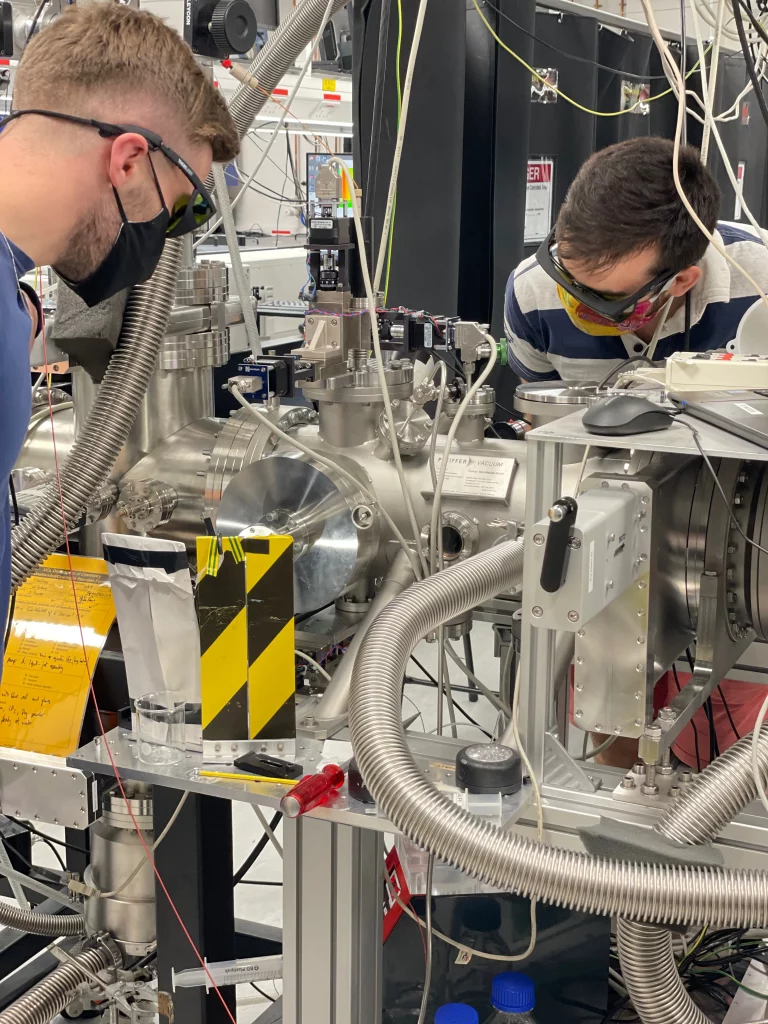
Our liquid-microjet photoelectron spectrometer is used for photoelectron spectroscopy studies of aqueous solutions of molecules and ions. It comprises a Microliquids recirculating liquid-jet assembly and a magnetic bottle photoelectron spectrometer. Liquids are introduced into the source region of the photoelectron spectrometer through a 20 um fused silica capillary using a high performance liquid chromatography (HPLC) pump, where they are interrogated with femtosecond UV light pulses. The kinetic energies of the electrons provide information on the binding energies of the electronic states. Current research using this instrument is focussed on biologically and atmospherically relevant molecules and their building blocks.
Photoelectron Spectroscopy of Surfaces
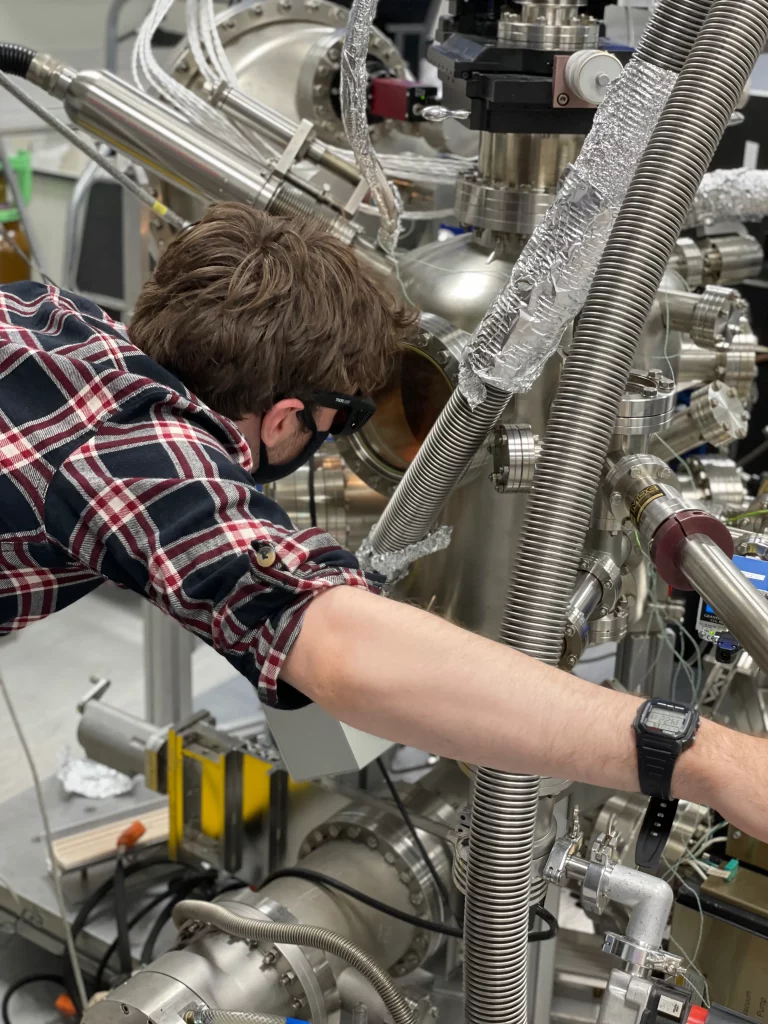
Our ultra-high vacuum (UHV) chamber is used for structural and electronic characterisation of clean and adsorbate-covered surfaces. It is capable of low energy electron diffraction (LEED) measurements in addition to X-Ray, UV and two-photon photoemission (2PPE) spectroscopy. Time-resolved 2PPE measurements are possible on the femtosecond timescale with continuously variable excitation wavelengths between 235-2600 nm, and photoelectrons are detected with a hemispherical electron kinetic energy analyser (VG Scienta R3000). Current research using this instrument focuses on metal oxide surfaces and other systems relevant to light harvesting applications, including hybrid perovskites, in collaboration with Geoff Thornton.
Femtosecond Transient Absorption Spectroscopy
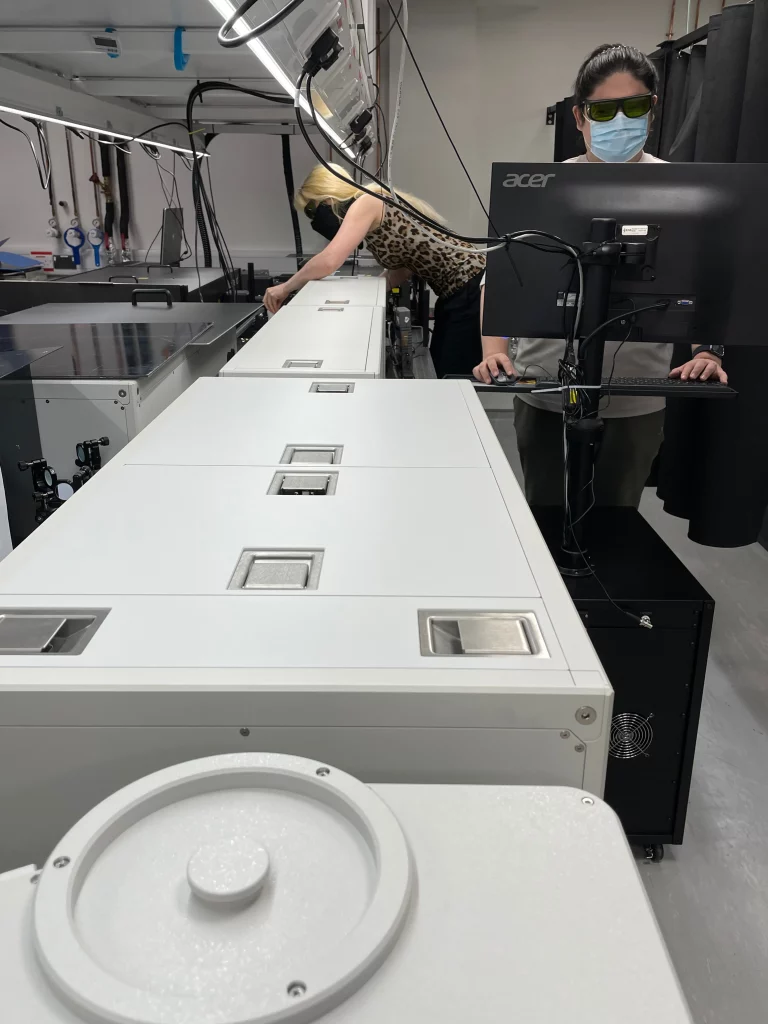
Our femtosecond transient absorption spectroscopy (TAS) apparatus is used to track the evolution of the electronic structure of photoexcited systems in the condensed phase (liquids and thin films). It comprises an Ultrafast Systems Helios Fire spectrometer with a 320-1600 nm spectral range and a time window of 8 ns. TAS measurements are possible on the femtosecond timescale with continuously variable photoexcitation wavelengths between 235-2600 nm. Current research using this instrument focuses on gold nanoclusters, in collaboration with Ivan Parkin, and small molecular systems of biological relevance.